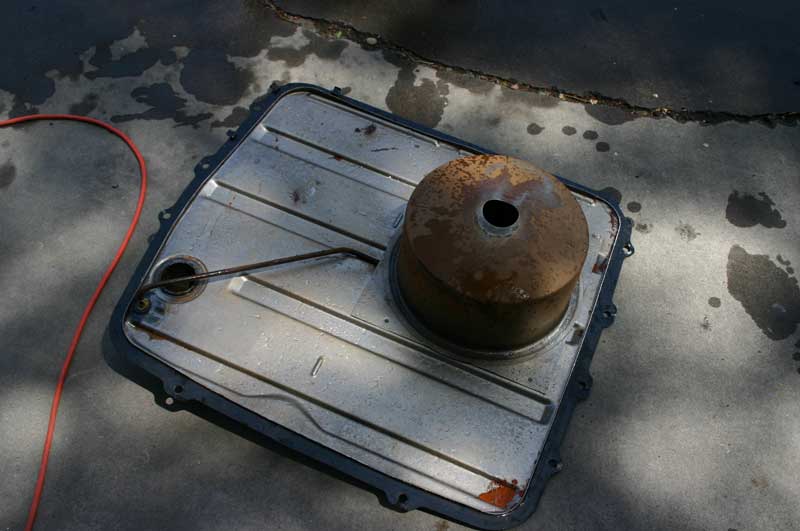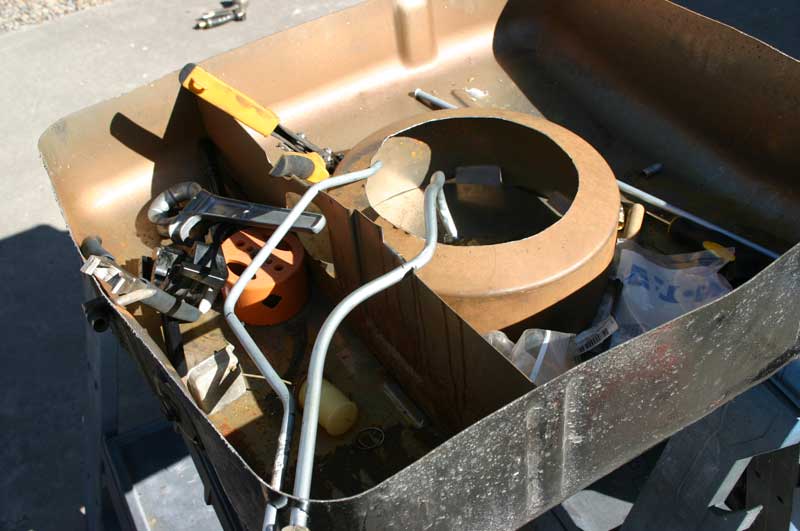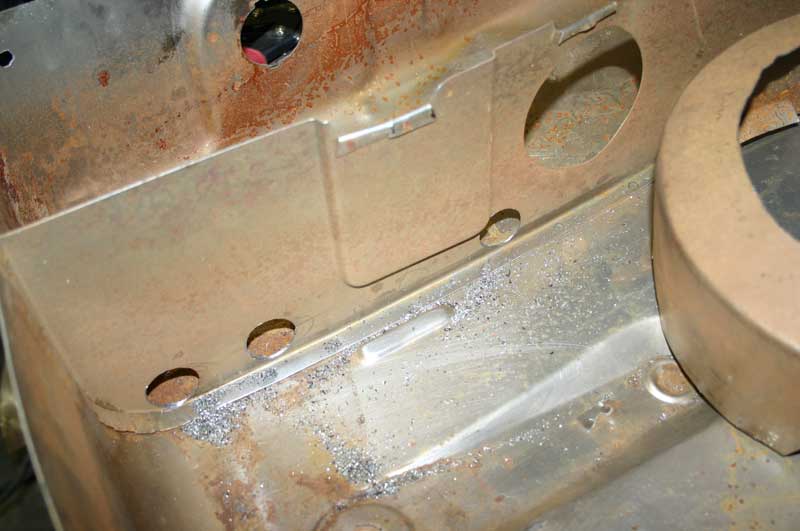A bit of fun from today and last week.
The LS1-powered MG was showing signs of a fuel pickup problem. I'd been considering building a new tank, but the stock one fit so well under the car I figured I'd see if I could do something with it. So I pulled the tank out and opened it up.
To keep from blowing myself up, I filled the tank with water before using a sawzall to cut the top off. And was I surprised at what I found inside! This is the top of the tank, placed upside down on the driveway.

Check out that big canister...thing. I popped the four spot welds holding it to the top of the tank, here's what it looked like in place.

The MG is a 1972 model that I got out of California. It had a charcoal canister setup, and that's the line to the charcoal canister you can see in the first picture. The line ran between the canister and the top of the tank and breathed through a really small orifice at the top of the canister. There's a round hole in the bottom you can see. A dent in the bottom of the tank (I'm thinking someone tried to use it as a jacking point) was perfectly placed to block this lower hole off. So it was basically a giant empty cylinder in my tank.
The problem? I'd been using that charcoal canister line as my fuel return line for the fuel injection system. It's a wonder the poor pump managed to push any fuel back into the tank at all. It would have been squeezing it out of the grooves on each side of that canister at the top of the tank.
I decided to address all of this by building new pickup and return lines, using the big canister as a sump of sorts.

I cut the top off the canister and enlarged the bottom hole considerably. I flipped it over, cut a few slits in the (now) bottom and bent the resulting "doors" inwards a bit. The new pickup line was bent up out of 3/8" brake line with a 5/16" return - they also dodge around the fuel level sender, thus the odd routing. The return dumps back into the sump, aimed at the side of the cylinder so it'll swirl into place. The previous charcoal canister line was cut off and capped. I also beat the big dents out of the bottom of the tank.
There's an added trick in here. There's a baffle that runs from front to back on the tank. The float for the fuel sender is on the side away from the pickup. But the hole in the baffle is about 2" off the lowest point of the tank. So when you get down to your last gallon or two of fuel, it no longer gets transferred to the other side of that baffle...where the pickup is. At a certain point, the fuel gauge would stop going down as you continued to suck the fuel out of the tank. There's no good final result here. It's like they wanted you to run out of gas.
A few holes at the bottom of the baffle avoided the sneak "out of fuel" attack. Seriously, who thought that was a good idea?

Welded it all back together and voila, a new fuel tank! I ended up having to go back into it later because of a pinhole in the feed line that had the pump sucking air instead of fuel - should have pressure-tested that before assembly. The tank is upside down here.

I also had a problem of spitting a bit of fuel out of the filler neck on track. The filler neck is right above one of the mufflers, which led to some exciting moments.
.jpg)
The solution was to put in a flapper from a modern filler neck. I cut one out of a Miata filler and welded it into the neck for the MG. I'm hoping that will solve the problem. The future will hopefully bring a cool Aston filler neck setup, but not yet.

Thanks to all this I have an enlarged tank capacity (in large part due to the removal of the big sealed canister taking up space), an improved pickup, better baffling, fewer fireballs and (hopefully) no weird fuel delivery problems. Time will tell!































